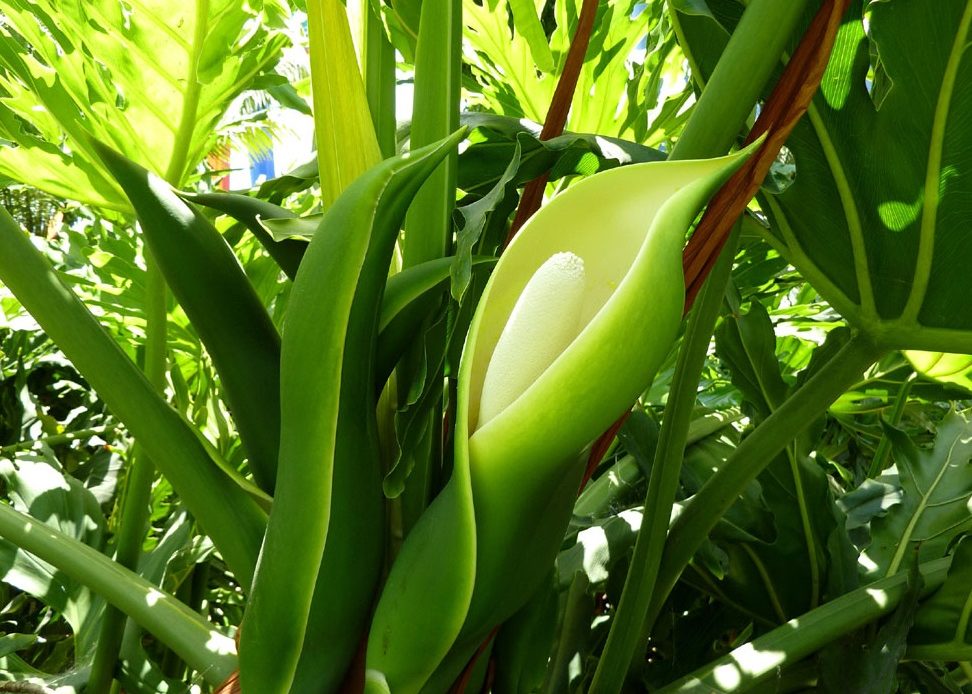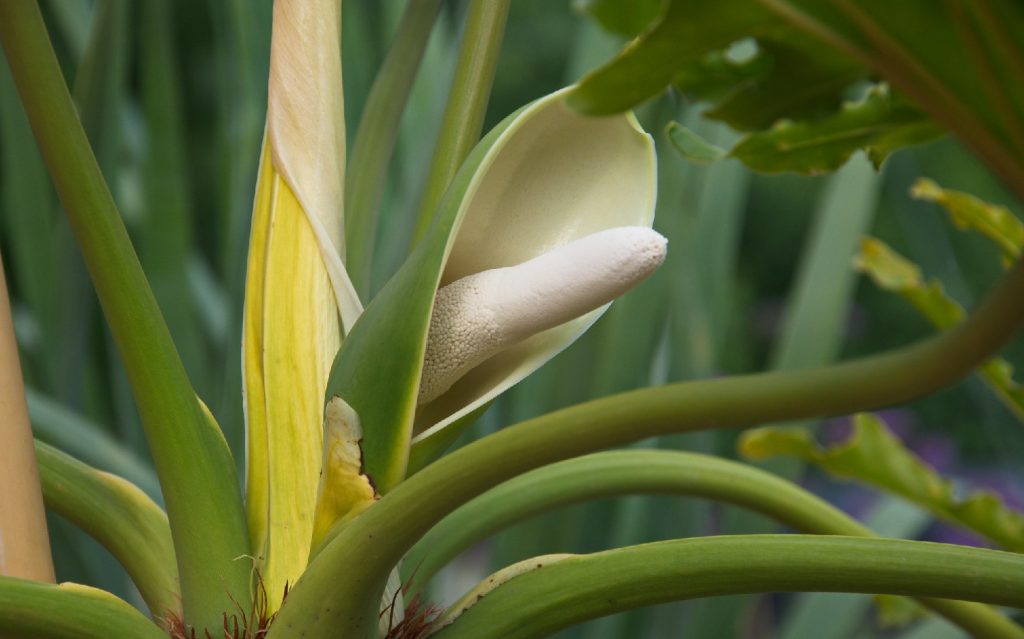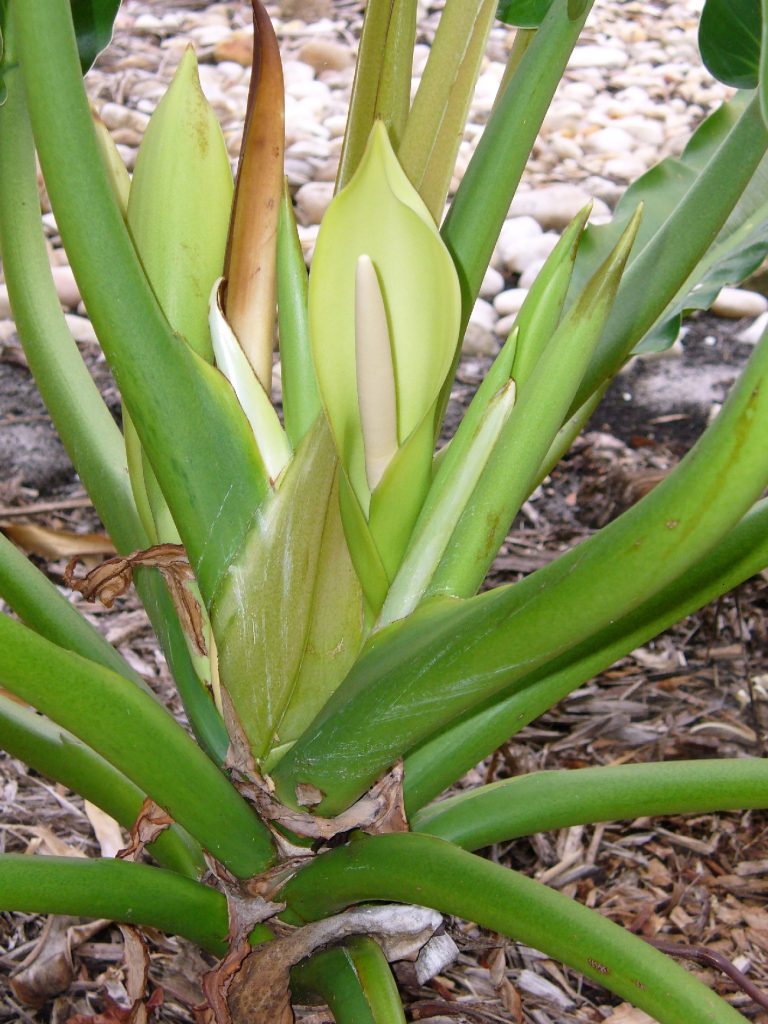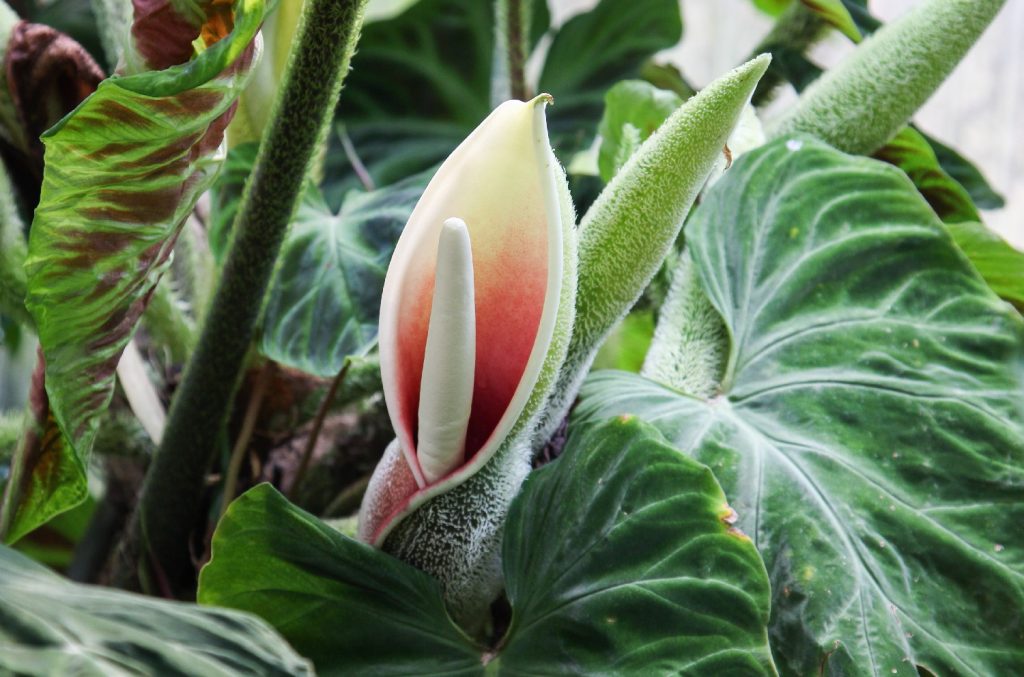

We’re here to help! Wild Yards is a completely free website that is 100% dedicated to helping you create a wildlife-friendly, sustainable yard. Read more
WildYards is reader-supported. When you buy a product through a link on our site, we may earn a comission. Every product is independently selected by our (obsessive) editors and our reviews are unbiased and objective. Read more about our mission or our privacy policy.
If you live in an apartment or if you just don’t have a big yard, you’ve got to bring the outdoors inside. Philodendrons are popular indoor plants because they add a dash of greenery without requiring a tremendous amount of attention. But if you’re looking for indoor plants that bloom you may be wondering if philodendron plants produce flowers.
Yes, these plants do bloom, but not very often. Philodendron flowers are somewhat reminiscent of white calla lilies, and mature plants can produce up to 11 flowers at once. While these plants are fairly low-maintenance, it takes time and effort to get them to bloom.
What are philodendrons?
Philodendrons are a member of a genus of flowering plants called Araceae and are best known for their large, impressive foliage. While the leaves of adult plants vary in size and shape from cultivar to cultivar, most philodendrons produce oval or arrow-shaped leaves that are deeply lobed with smooth or pinnate edges. Juvenile plants produce heart-shaped leaves until they mature.
The word “philodendron” comes from the Greek words philo, meaning “lover of”, and dendron, meaning “tree”. Philodendrons are tropical plants native to Central and South America, where they grow (you guessed it) near trees and where they can receive plenty of indirect sunlight.
Philodendrons love moist but well-drained soil and lots of heat. They grow best in 65 to 90-degree temperatures, and the more humidity, the better. Humid conditions improve foliage production and allow the leaves to grow to their maximum sizes. So while these plants can be grown indoors, they can grow even better outside if the weather permits.
When do philodendrons bloom?
Philodendrons only bloom once they reach maturity. For most plants, that’s after 15 or 16 years. So if you want to see philodendron flowers, purchase older plants if you can. Otherwise, you’re in for a long wait.
When they do grow old enough to bloom, they don’t do so often. These are not Knockout Roses, they’re not repeat-bloomers. Mature plants bloom once a year from May to July. And each plant can only produce up to 11 flowers at a time.
Philodendrons are incapable of self-pollination, and because they are often grown indoors where pollinators like beetles can’t reach them, they need to be hand-pollinated to reproduce. If you want to help your philodendron flowers pollinate, it’s important to understand their anatomy.

How can you hand-pollinate philodendron flowers?
Philodendron flowers have two parts. The hood of the flower is called the “spathe” and the long, corn cob-shaped center is the “spadix”. Philodendron flowers are inflorescences because the flowers themselves grow in clusters at the ends of long branches.
These sweetly fragrant inflorescences are only open for two days at a time. The female part of the plant is located near the base of the spadix and is plumper than the rest of the bloom. The male flowers grow on the upper part of the spadix. To pollinate the inflorescences by hand, rub pollen from the upper male part of the spadix down to the female part.
The female parts of the spadixes are more receptive to pollination at night, so that’s the best time to pollinate them. If the pollination is successful, the philodendron flowers will become sticky and produce fruits. Philodendron fruits contain the seeds of the plant, and because they’re high in oxalate crystals, they’re toxic to people and pets.
Will philodendrons be pollinated by pollinators if they’re planted outside?
If you live in a warm environment that rarely gets below 55 degrees after sundown (even during the winter), you can grow your philodendrons outside. These plants hate cold weather. They don’t even like chilly weather and will start to suffer if the mercury drops below 65.
If you do live in a region where you can plant your philodendrons outside, there’s a chance that your local beetles, ants, and other insects will be able to pollinate them. As we mentioned earlier, philodendron flowers are very fragrant. Plus, they’re a good source of pollen. So they’re more than capable of attracting bugs to help them reproduce and propagate.
Philodendrons also produce heat to encourage pollinators to visit. These flowers maintain internal temperatures of up to 114 degrees, regardless of the surrounding air temperatures. And unlike other plants, which use carbohydrates and proteins to bloom, philodendron flowers burn fats to keep things warmed up. These flowers require so much energy to bloom that they consume as much oxygen as a flying hummingbird or sphinx moth. The blooming process is so labor-intensive, it’s no wonder it takes philodendrons so long to produce flowers!

What is the best way to care for your philodendrons?
If you live in zones 9-11, you can keep your philodendrons outside. If you live anywhere else, you need to keep your philodendrons indoors. This plant needs to be in a warm climate-controlled environment to thrive. Wherever you grow your philodendrons, be sure to give them the following.
Indirect sunlight
Philodendrons love lots of light, but not direct sunlight. These plants do well when planted next to a house, shed, or gazebo. These structures offer them a bit of protection from the sun’s scorching heat while still allowing them to absorb the light needed for photosynthesis. If you grow your philodendron indoors, keep it near a sunny window.
Well-draining soil
These plants like lightweight, well-draining soils with enough organic materials to retain some water and allow oxygen in for the roots. Philodendrons are picky about their soil, so keep things evenly moist, not too wet in one spot and bone dry in another. And never let your philodendron’s soil dry out completely. Water them sparingly, but often.
All-purpose fertilizer
Give your philodendrons enough nutrients by fertilizing them regularly. An all-purpose fertilizer will do just fine. Be sure to feed your plants once a month during the growing season, and once every other month in the winter.
Warm temperatures
The warmer you can keep your philodendrons, the better. Do not let your thermostat dip below 65 degrees. If by chance, your power goes out during cold weather, you’ll need to cover your philodendron with a blanket to keep it warm until the power comes back on (no, we’re not kidding). When temperatures stay around 55 degrees regularly, it stunts the plant’s growth.
Humidity
Philodendrons like humidity. If you live in a region with high humidity, you can place your philodendron outside when it’s warm enough. Otherwise, try to keep your philodendron in the “wettest” part of your house. You may find your philodendron does better in the kitchen near the dishwasher, or in the laundry room near the washer and dryer — provided these spaces receive enough light, that is.
Regular pruning
Routinely pruning your philodendrons reshapes them and helps them utilize their energy for new growth. Use sharp scissors to snip away asymmetries, dying leaves, and broken stems. Prune your juvenile philodendrons in spring or summer, when there’s plenty of warmth and sunlight to stimulate foliage production. If you expect your mature philodendrons to produce flowers in the spring and summer, wait until they’ve bloomed (by the end of July) before pruning them, so as not to interfere with the flowering process.

What are the best varieties of philodendrons to grow?
Philodendrons are excellent for purifying the air. If you want to grow them for this feature alone, look for ‘Elephant Ear’ and ‘Lacey Tree’ varieties. These two philodendrons have been proven to be some of the best house plants for removing toxins from the air. They’re excellent choices for allergy sufferers.
If you’re new to growing philodendrons, you can’t go wrong with classic varieties like ‘Xanadu’ and ‘Selloum’. These two upright philodendrons produce large, lobed, pinnate leaves. They also produce spectacular white flowers after 15 to 20 years.
If you’re looking for indoor plants to fill your hanging pots, try vining philodendrons. ‘Cordatum’, also known as sweetheart vine, produces bright green, heart-shaped leaves that are only three inches long at most. ‘Micans’ produces elongated heart-shaped leaves with an eye-catching purple border. Both of these plants may produce inflorescences, too, but they only do so when grown outside.
How can you encourage philodendron flowers to bloom?
Unfortunately, there is no way to speed up the philodendron blooming process. You have to allow the plant to mature, which means if your plant is a seedling, you’ll have to wait at least a decade and a half.
Philodendrons need all of their planting requirements to be met before they can produce flowers. They especially need humidity. Central air and heating systems circulate the air well, helping dissipate humidity. Unless you have an indoor greenhouse, it can be difficult achieving the level of humidity philodendrons need to bloom.
Again, if you have a space in your home that stays humid, that’s the best place to keep your philodendron. Bathrooms with large windows work very well. If you’re committed to encouraging philodendron flowers to develop, you can keep a humidifier with your plants at all times. Keeping the air sufficiently moist is the absolute best thing you can do to get your philodendrons to bloom.
If you want to see philodendron flowers, your best bet is to visit a conservatory that grows them. Getting your philodendron plants to bloom takes time and serious dedication. But with patience and persistence, you can help your philodendrons live long enough to produce their incredibly rare flowers.
